Abstract
A 3-year entomological study was carried out on the transmission of malaria in a village of 900 inhabitants in a rice-growing area of Burkina Faso. In the study area inhabitants use bed nets to protect themselves from mosquito bites. In the first year of the study, baseline data were collected; in the second year, the village was divided in two parts and all the bed nets in the southern part were sprayed with deltamethrin (25 mg/m2); and in the third year, all the bed nets in both parts of the village were sprayed. The inoculation rate was estimated by hand collection of mosquitos on human volunteers who were not protected by bed nets. The overall inoculation rate in the first year was 55 infected bites per person and was higher in the southern than in the northern part of the village. During the second year the rate increased to 70 bites per person on average (but was slightly lower than this in the southern part of the village). During the third year, the inoculation rate fell to three infected bites per year, i.e., a reduction of 94% compared with the first year. This reduction arose primarily because of a marked decrease in the sporozoitic index and a lower density of vectors. Thus, use of pyrethroid-impregnated bed nets by all members of the community appears to be a major tool in preventing transmission of malaria.
Full text
PDF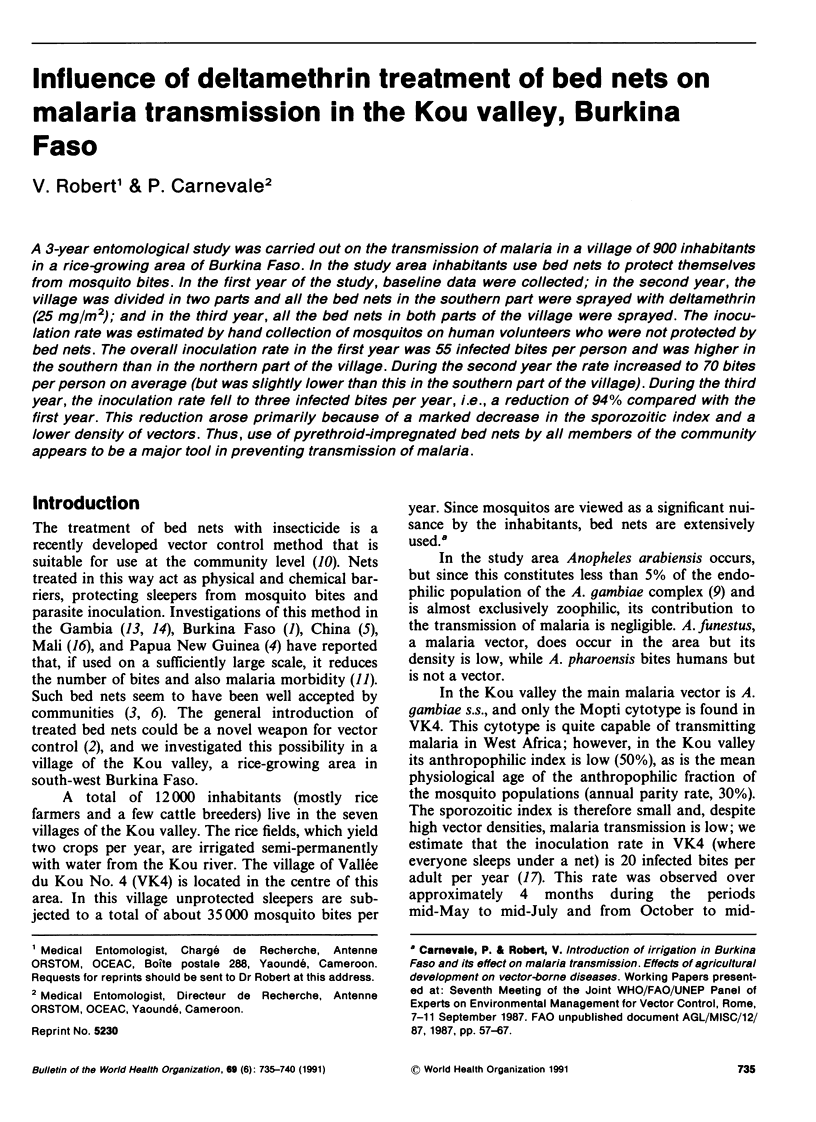
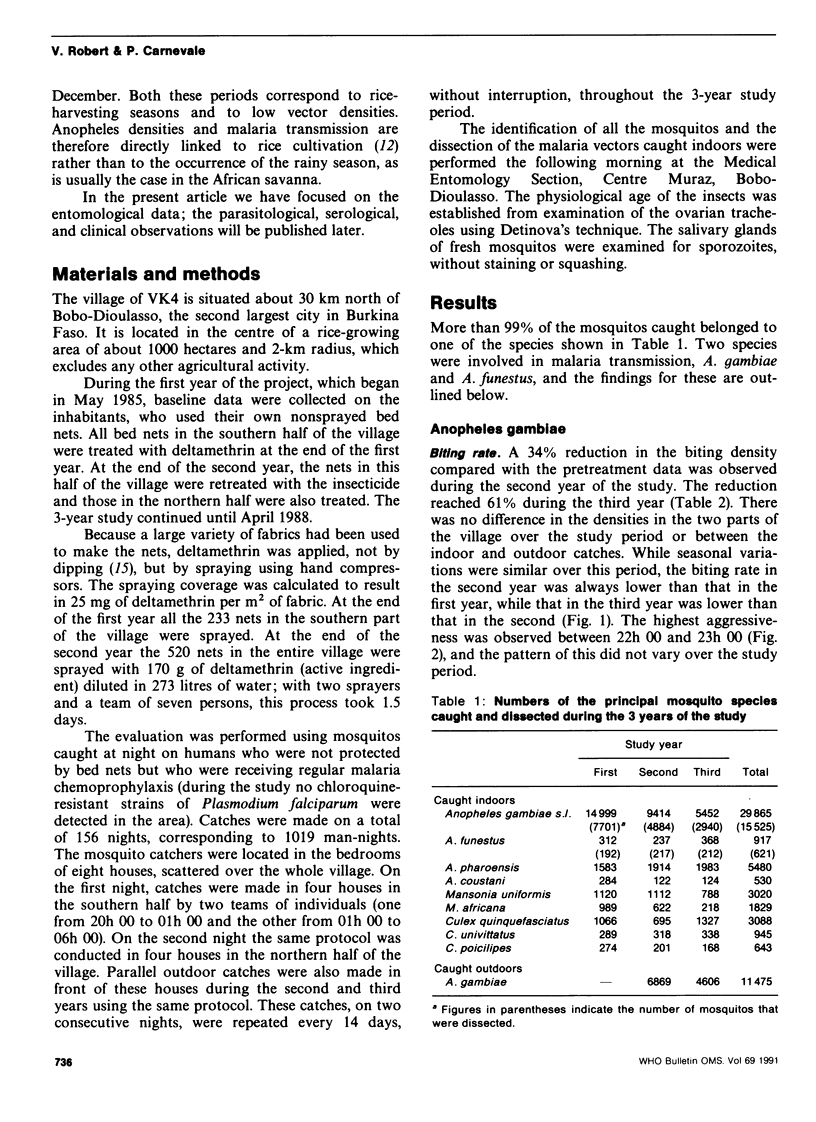
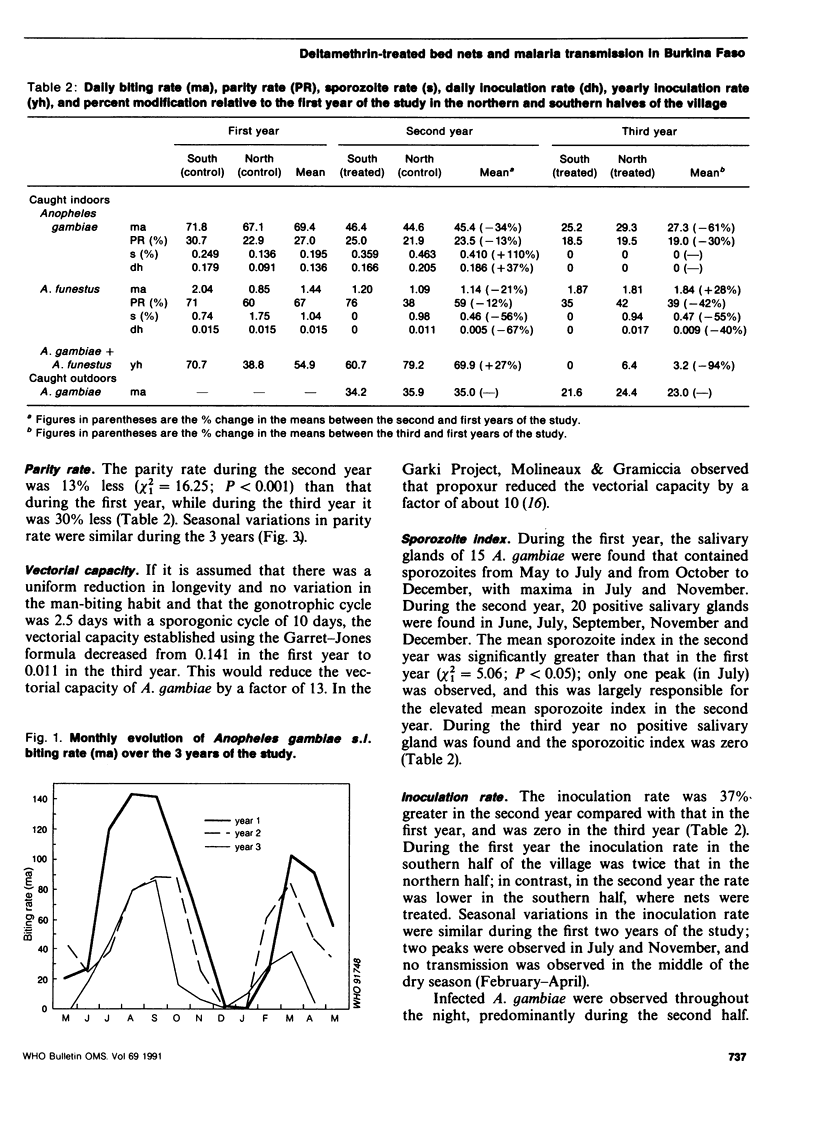
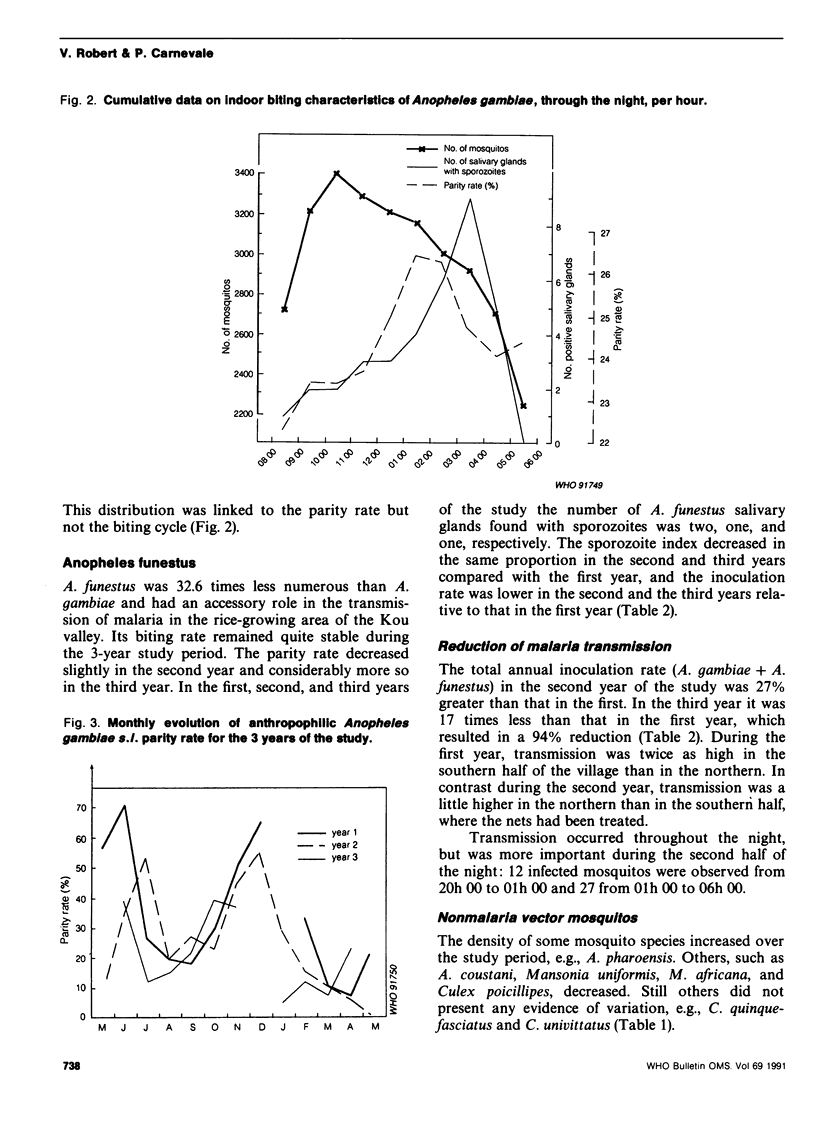
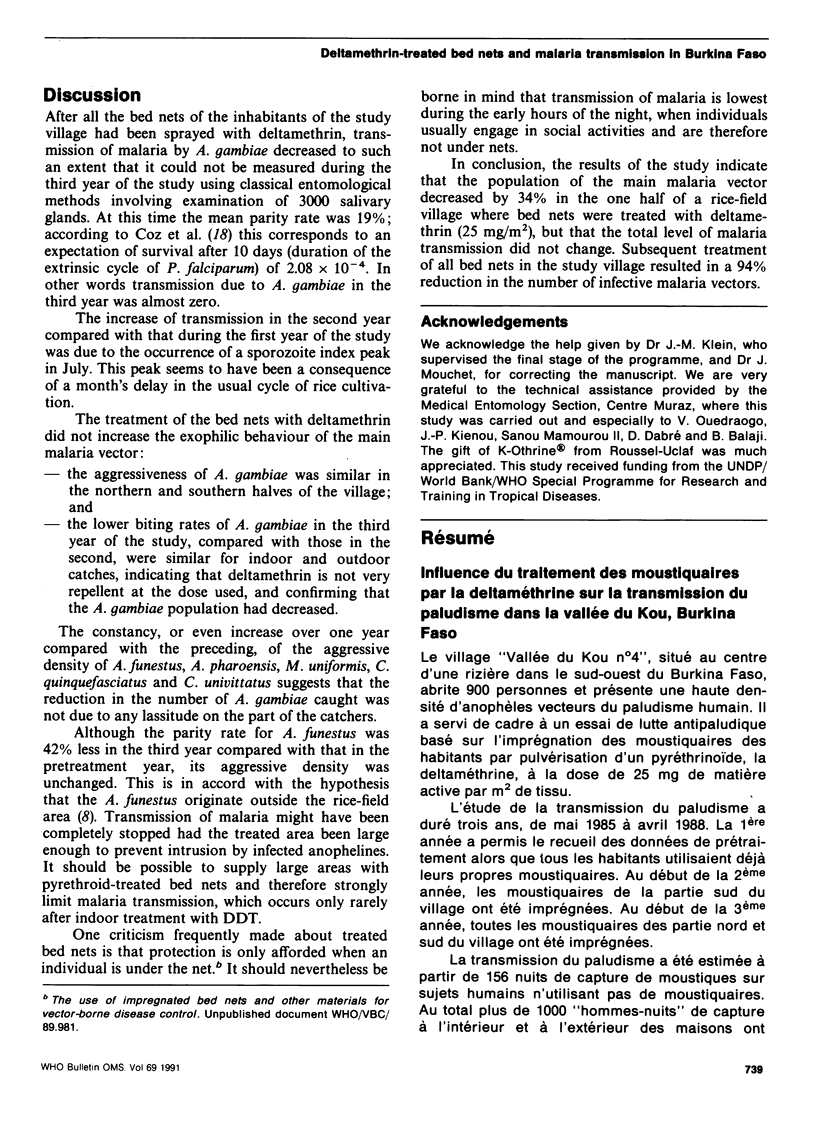
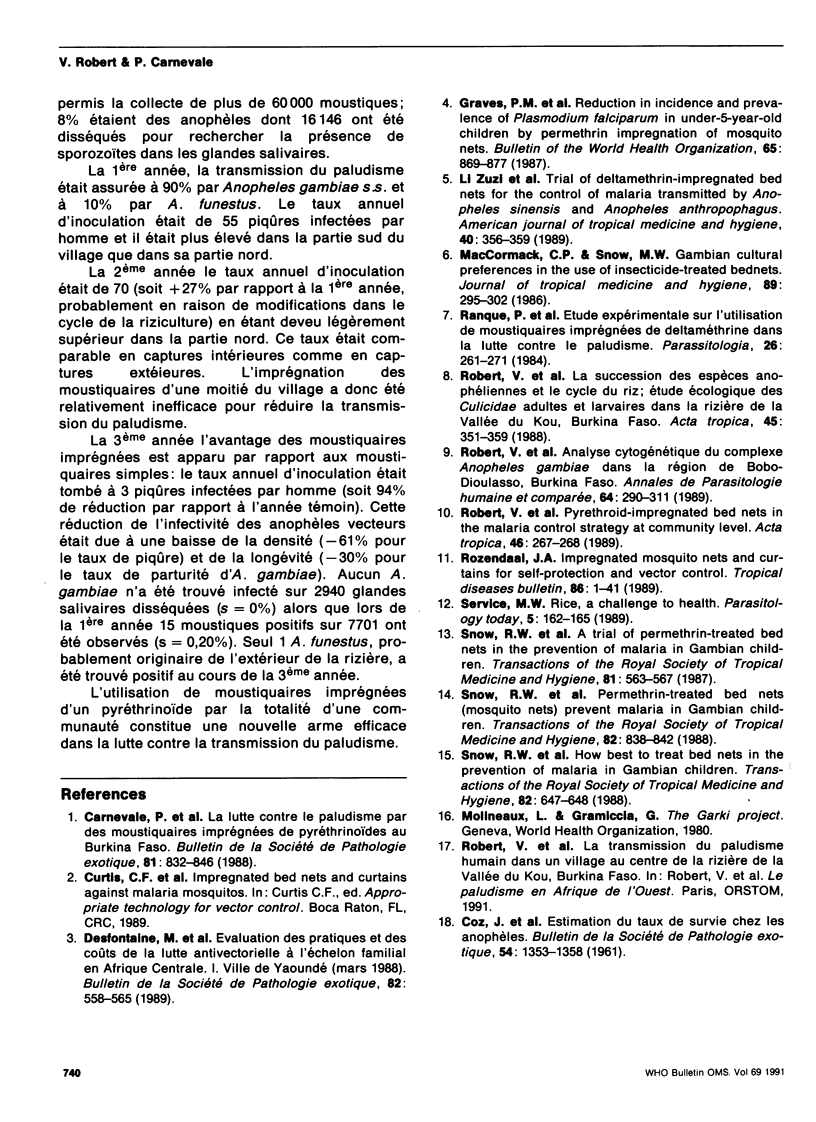
Selected References
These references are in PubMed. This may not be the complete list of references from this article.
- Graves P. M., Brabin B. J., Charlwood J. D., Burkot T. R., Cattani J. A., Ginny M., Paino J., Gibson F. D., Alpers M. P. Reduction in incidence and prevalence of Plasmodium falciparum in under-5-year-old children by permethrin impregnation of mosquito nets. Bull World Health Organ. 1987;65(6):869–877. [PMC free article] [PubMed] [Google Scholar]
- MacCormack C. P., Snow R. W. Gambian cultural preferences in the use of insecticide-impregnated bed nets. J Trop Med Hyg. 1986 Dec;89(6):295–302. [PubMed] [Google Scholar]
- Ranque P., Touré Y. T., Soula G., Du L., Diallo Y., Traoré O., Duflo B., Balique H. Etude expérimentale sur l'utilisation de moustiquaires imprégnées de deltaméthrine dans la lutte contre le paludisme. Parassitologia. 1984 Dec;26(3):261–268. [PubMed] [Google Scholar]
- Robert V., Carnevale P., Mouchet J. Pyrethroid-impregnated bed nets in the malaria control strategy at community level. Acta Trop. 1989 Jul;46(4):267–268. doi: 10.1016/0001-706x(89)90027-2. [DOI] [PubMed] [Google Scholar]
- Robert V., Ouari B., Ouedraogo V., Carnevale P. Etude écologique des Culicidae adultes et larvaires dans une rizière en Vallée du Kou, Burkina Faso. Acta Trop. 1988 Dec;45(4):351–359. [PubMed] [Google Scholar]
- Service M. W. Rice, a challenge to health. Parasitol Today. 1989 May;5(5):162–165. doi: 10.1016/0169-4758(89)90083-5. [DOI] [PubMed] [Google Scholar]
- Snow R. W., Lindsay S. W., Hayes R. J., Greenwood B. M. Permethrin-treated bed nets (mosquito nets) prevent malaria in Gambian children. Trans R Soc Trop Med Hyg. 1988;82(6):838–842. doi: 10.1016/0035-9203(88)90011-9. [DOI] [PubMed] [Google Scholar]
- Snow R. W., Rowan K. M., Greenwood B. M. A trial of permethrin-treated bed nets in the prevention of malaria in Gambian children. Trans R Soc Trop Med Hyg. 1987;81(4):563–567. doi: 10.1016/0035-9203(87)90408-1. [DOI] [PubMed] [Google Scholar]


